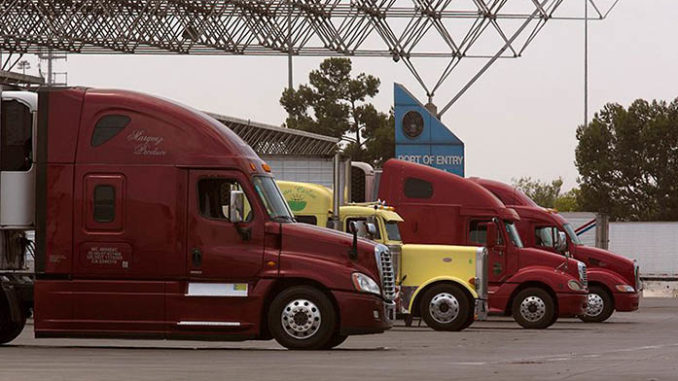
By overwhelming bipartisan votes, the United States-Mexico-Canada trade deal is now law, not so much replacing NAFTA as modifying it. The House voted for it 385 – 41 on December 19, with 89 – 10 Senate approval January 16. All Arizona House and Senate members voted “Aye.” It was a major part of President Donald Trump’s campaign platform. But what is really in it for us?
Glenn Hamer, President and CEO of the Arizona Chamber of Commerce sees “economic expansion” but doesn’t say how that will happen. The presidents of the University of Arizona, Arizona State University and Northern Arizona University all expressed support, but again in generalities. President Trump, at the signing ceremony, declared, “The USMCA is the largest, fairest, most balanced and modern trade agreement ever achieved. There’s never been anything like it.”
Jeff Kucik at the UA School of Government and Public Policy saw it differently, noting that or the average Arizona resident, increased foreign trade can present a mixed bag. Consumers often benefit from free trade because of increased access to cheaper foreign goods. “However, if we buy more stuff from abroad, we’re buying fewer things made at home,” Kucik said. “So the political tradeoff is foreign goods versus U.S. jobs, and everyone has to make that political decision for themselves.”
In 2018, the latest numbers available, Arizona exported $7.6 billion worth of goods to Mexico and imported $10.6 billion worth. That’s a $3 billion yearly trade deficit that the USMCA is not likely to fix. Quite the opposite: The new NAFTA raises the amount of automobile parts to be manufactured in North America from 62.5 % to 75 %. Note that North America is Mexico and Canada as well as the U.S. There are no guarantees that Americans will see any increase in automotive jobs. The continuing wage disparities suggest the opposite.
The USMCA won AFL-CIO support with clauses providing that 40 – 45 % of automotive parts will be made by Mexican workers earning an average of $16/hour by 2023, and new labor laws allowing Mexican workers to vote for unions and on contracts. Major unions including the United Auto Workers, International Association of Machinists and United Food and Commercial Workers maintained opposition to the new NAFTA because of concerns over loopholes and enforcement. There are no guarantees against company-run unions.
Mexican auto workers earn about $3.29 an hour, while China’s have risen to $5.19/hour. Unionized US auto workers make from $17 to $30/hour. The profit incentive to manufacture in Mexico is high, and the USMCA lets it happen. It does not bring those jobs back to the United States.
The “economic expansion” the Chamber of Commerce head sees includes the construction of Interstate 11 west of Tucson, which will create short-term construction jobs to facilitate moving goods from long-term manufacturing and assembly jobs – in Mexico, “integrative manufacturing,” as well as “nearshoring,” attracting American companies from China to Mexico, and diverting shipping from US west coast ports to Guaymas.
There will be more dairy access to Canada in the new deal, but that does nothing for Arizona. In stating his opposition to the USMCA, Senator and presidential candidate Bernie Sanders said: “We need to fundamentally rewrite our disastrous trade agreements and create and protect good-paying American jobs. This agreement does virtually nothing to stop the outsourcing of jobs to Mexico.”
